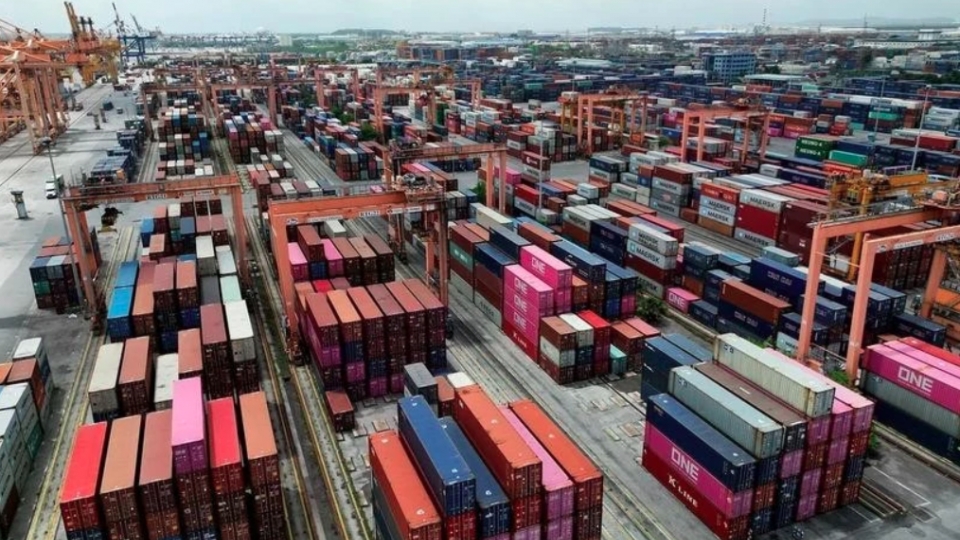Vietnam sharpens logistics edge to anchor global trade links
VOV.VN - Amid global trade uncertainties, the Vietnamese government has positioned the country as one of ASEAN’s most attractive logistics markets through a robust diversification strategy and enhanced regional connectivity.
Although businesses may experience slower growth in the short term, the logistics sector must step up efforts to improve efficiency and resilience, particularly through stronger collaboration between competent agencies and private enterprises. This will be crucial to maintaining and strengthening the country’s leadership in the region.

Vietnam has demonstrated a strong commitment to improving trade infrastructure, investing roughly 6% of its GDP annually, far above the regional average. These investments have delivered notable results. For example, the Mekong Delta region has seen a significant transformation, thereby attracting foreign investment thanks to better transportation systems.
The country currently operates 44 seaports with a combined capacity of about 500 million tonnes per year, alongside 22 airports, including 12 international ones. These major ports and airports play an essential role in facilitating trade flows.
However, logistics operations remain heavily reliant on road transport, which accounts for around 75% of goods and 90% of passengers. This overreliance, combined with underdeveloped rail and waterway networks, creates inefficiencies, increases costs, and undermines competitiveness.
To deal with these issues, on January 16, 2025, the Prime Minister approved Decision No. 140, outlining the detailed master plan for seaport groups, wharves, berths, buoys, water zones, and maritime areas for the 2021–2030 period, with a vision to 2050.
The plan aims to modernize port infrastructure, expand deep-water and inland ports, and improve multimodal transport connectivity, with the goal of raising port capacity to 1.25-1.5 billion tonnes annually by 2030.
Vietnam is also actively pursuing an open trade policy. Notably, the country is a member of both the ASEAN–China Free Trade Area (ACFTA) and the Regional Comprehensive Economic Partnership (RCEP). According to a 2022 report on RCEP’s potential impacts, the World Bank noted that Vietnam, along with other middle-income countries, stands to benefit the most from the agreement.
Between now and 2035, the average tariff imposed by Vietnam is expected to drop from 0.8% to 0.2%, while tariffs applied to Vietnamese goods will fall from 0.6% to 0.1%.
Four scenarios were modeled to assess RCEP’s impact: basic tariff reductions, removal of non-tariff barriers, reduced trade costs through simplified rules of origin, and productivity gains from trade liberalization.
In the most optimistic scenario, Vietnam’s income could increase by 4.9%, more than any other RCEP member. Exports are projected to grow by 11.4%, and imports by 9.2%, underscoring the country’s rising importance in regional trade flows.
Vietnam has strengthened its reputation as a rising global manufacturing hub, with many major producers shifting part of their operations there. However, rising US tariffs may introduce new uncertainties, raising concerns about Vietnam’s sustained competitiveness in global supply chains.
Despite robust growth and growing regional importance, Vietnam’s logistics sector still faces structural and environmental challenges. While major cities have benefited from strong infrastructure investments, logistics performance in less urbanized areas continues to lag.
Rural and remote areas still lack reliable road networks, leading to frequent congestion and delivery delays. Many port systems are outdated and poorly equipped, causing shipment bottlenecks and high operating costs. Despite the nation’s extensive river systems, both inland waterways and rail transport remain underutilized, thereby further deepening the country’s reliance on roads.
In addition, the lack of multimodal integration and seamless connections between road, rail, and seaport systems continues to limit the effectiveness of logistics chains and hinders the development of end-to-end transport solutions.
Vietnam’s competitive advantages, including its strategic location, open trade environment, developed infrastructure and low labor costs, have made it one of the biggest beneficiaries of the “China plus one” strategy. However, its future role in the global supply chain remains vulnerable to geopolitical shifts and tariff policies. This presents a challenge for the country’s long term competitiveness in both manufacturing and logistics.



